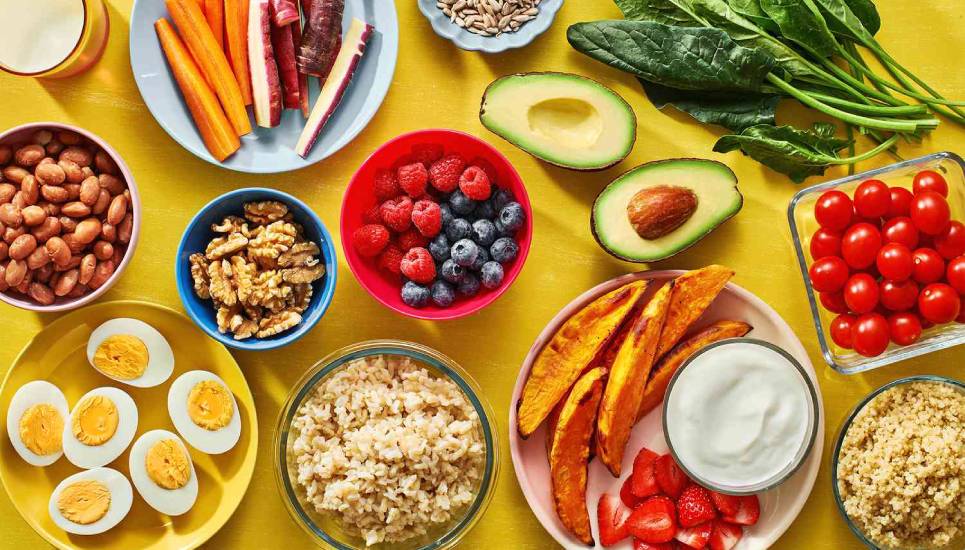
Wholesome and Tasty: Crafting Balanced Kids’ Meals
In this comprehensive guide, we will delve into the art of crafting balanced and delicious meals for children, ensuring that they receive the essential nutrients they need to thrive and grow. As expert nutritionists and parents ourselves, we understand the importance of providing children with wholesome, tasty, and nutritionally rich meals. Through this article, we aim to offer valuable insights and tips for creating well balanced meals for your children.
Why Balanced Meals Matter
Balanced meals form the foundation of a child’s health and development. It is well-established that the food children consume during their formative years plays a crucial role in their physical and cognitive growth. Nutrient-dense meals are not only vital for overall well-being but also for supporting brain development, enhancing immunity, and providing energy for daily activities.
Understanding Macronutrients and Micronutrients
To create well-balanced meals for children, it’s crucial to comprehend the role of macronutrients and micronutrients. Macronutrients refer to carbohydrates, proteins, and fats, which are required in larger quantities. Carbohydrates provide a primary source of energy, proteins are essential for growth and repair of body tissues, and fats are necessary for absorbing fat-soluble vitamins and supporting brain health.
On the other hand, micronutrients, such as vitamins and minerals, are equally important, even though they are needed in smaller amounts. These micronutrients are involved in various physiological functions, including strengthening the immune system, promoting healthy bones and teeth, and supporting nerve function.
The Building Blocks of a Balanced Meal
To create meals that are both nutritious and appealing to children, it’s essential to strike a balance between different food groups. Here are the key building blocks of a well-balanced meal:
- Protein-Packed Delights: Protein is a vital component of a child’s diet as it is responsible for building and repairing tissues. Protein-rich foods include lean meats such as chicken and turkey, fish, eggs, dairy products like yogurt and cheese, legumes such as lentils and beans, and plant-based options like tofu.
- Carbohydrate Choices: Carbohydrates are the primary source of energy for children’s active lifestyles. Opt for complex carbohydrates, which release energy slowly and provide a steady stream of fuel. Whole grains, such as whole wheat bread, brown rice, oats, and quinoa, are excellent choices. Additionally, include a variety of fruits and vegetables, which offer not only carbohydrates but also an array of vitamins, minerals, and fibre.
- Fruit and Vegetable Rainbow: Encourage your child to explore the colourful world of fruits and vegetables. Each color represents different nutrients, and consuming a diverse range ensures that children receive a wide spectrum of vitamins, minerals, and antioxidants. For example, orange and yellow fruits like oranges and bananas are rich in vitamin C, while leafy greens like spinach are excellent sources of iron and calcium.
- Healthy Fats: Healthy fats are essential for children’s growth and development, especially for their brain health. Avocados, nuts, seeds, and olive oil are excellent sources of unsaturated fats. Incorporate these healthy fats into meals to support brain function and overall well-being.
Meal Planning Tips for Kids
Creating balanced meals for children can be an enjoyable and rewarding experience. Here are some tips to help you plan and prepare nutritious and delicious meals that your child will love:
- Engage the Kids: Involve your children in meal planning and preparation. Take them grocery shopping and let them choose fruits, vegetables, and other healthy foods. When children feel involved in the process, they are more likely to try new foods and develop healthy eating habits.
- Variety is Key: Children can be sensitive to repetition, so it’s essential to offer a variety of foods. Experiment with different flavors, textures, and cuisines to keep meals interesting and exciting.
- Mindful Portions: Pay attention to portion sizes, especially for younger children. Children have smaller stomachs, so serve age-appropriate portions to avoid overeating. Offer snacks in between meals to keep their energy levels stable.
- Limit Processed Foods: Minimise the consumption of processed and sugary foods. These items often lack essential nutrients and can lead to health issues if consumed in excess. Instead, focus on whole, fresh foods that provide maximum nutritional value.
- Hydration Matters: Encourage your child to drink water throughout the day. Proper hydration is vital for maintaining energy levels and supporting overall health. Limit the intake of sugary beverages and excessive fruit juices.
Crafting nutritious and delicious balanced meals for children is both an art and a science. By understanding the importance of each nutrient and incorporating a variety of foods, you can ensure your child receives the necessary nutrients for growth and well-being. Engaging your child in the meal planning process and offering diverse, flavourful options will make mealtimes enjoyable and foster healthy eating habits that will last a lifetime.
FAQS
How do you make a balanced meal for kids?
Lean meats and other good sources of protein, such as fish, eggs, beans, and nuts. Choose whole-grain breads and cereals so kids get more fiber. Limit fat intake by avoiding fried foods and choosing healthier cooking methods, such as broiling, grilling, roasting, and steaming.
What are some healthy and delicious foods for kids?
Foods such are berries, vegetables, lean meats are great for children. Avocados are especially good for children along with banana’s and apples!
What foods cause mood swings in children?
Food that are high in sugar can cause children to have wild mood swings. This is because the sugar will make the children hyperactive. Once the sugar leaves their body it causes them to become lethargic, which can cause a mood change.




